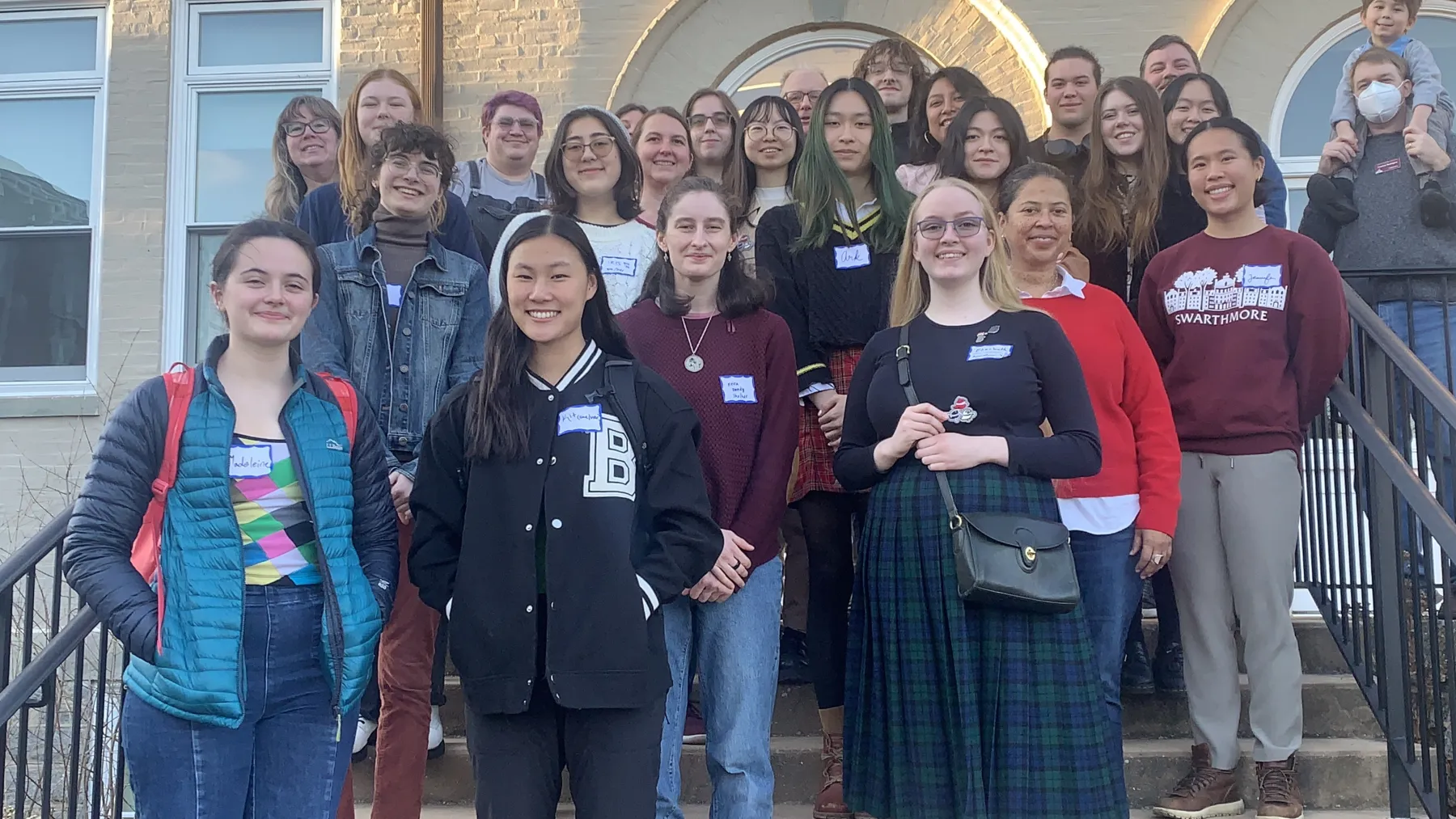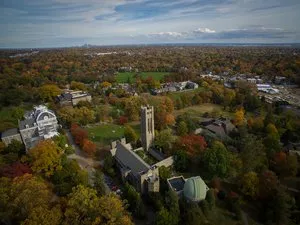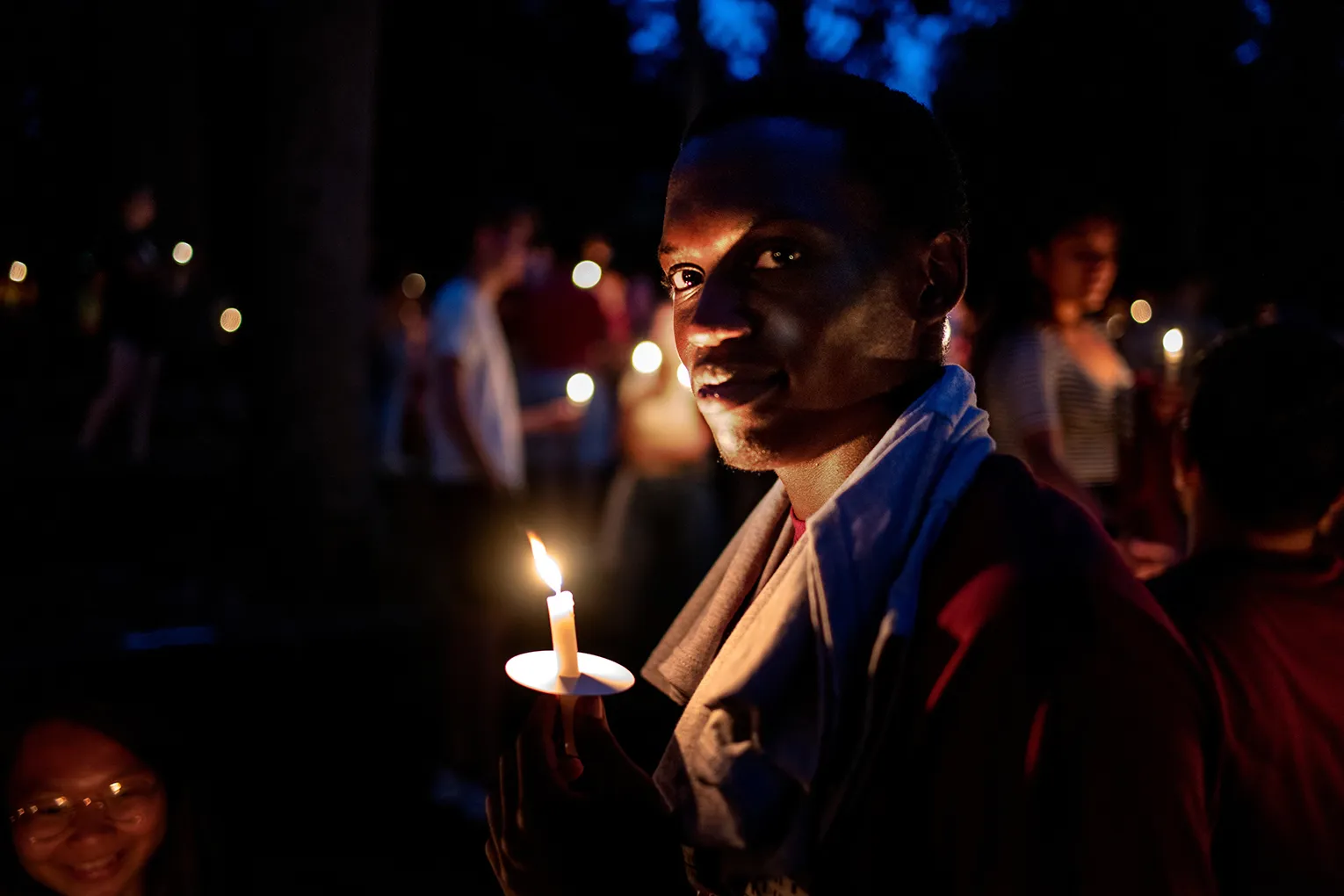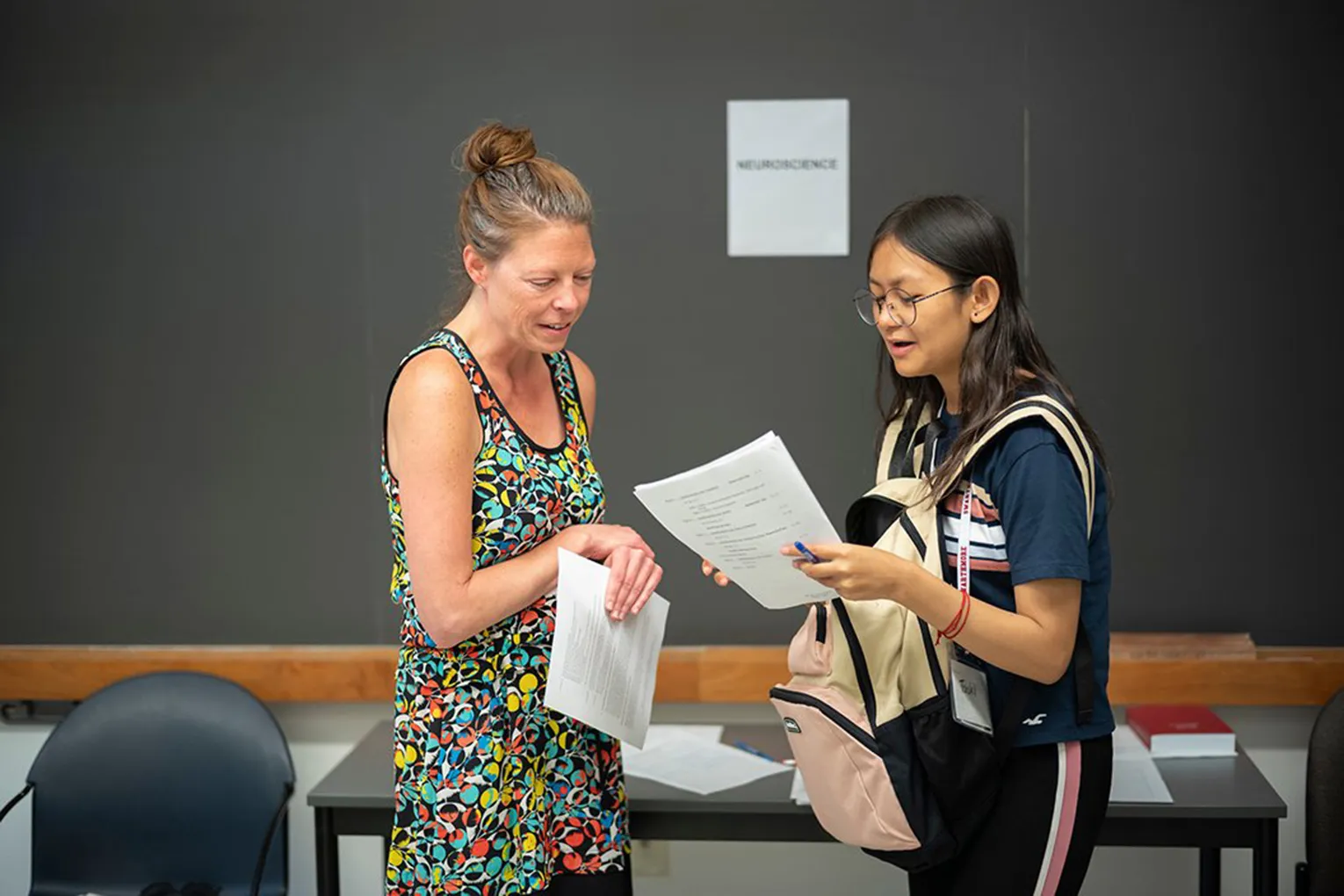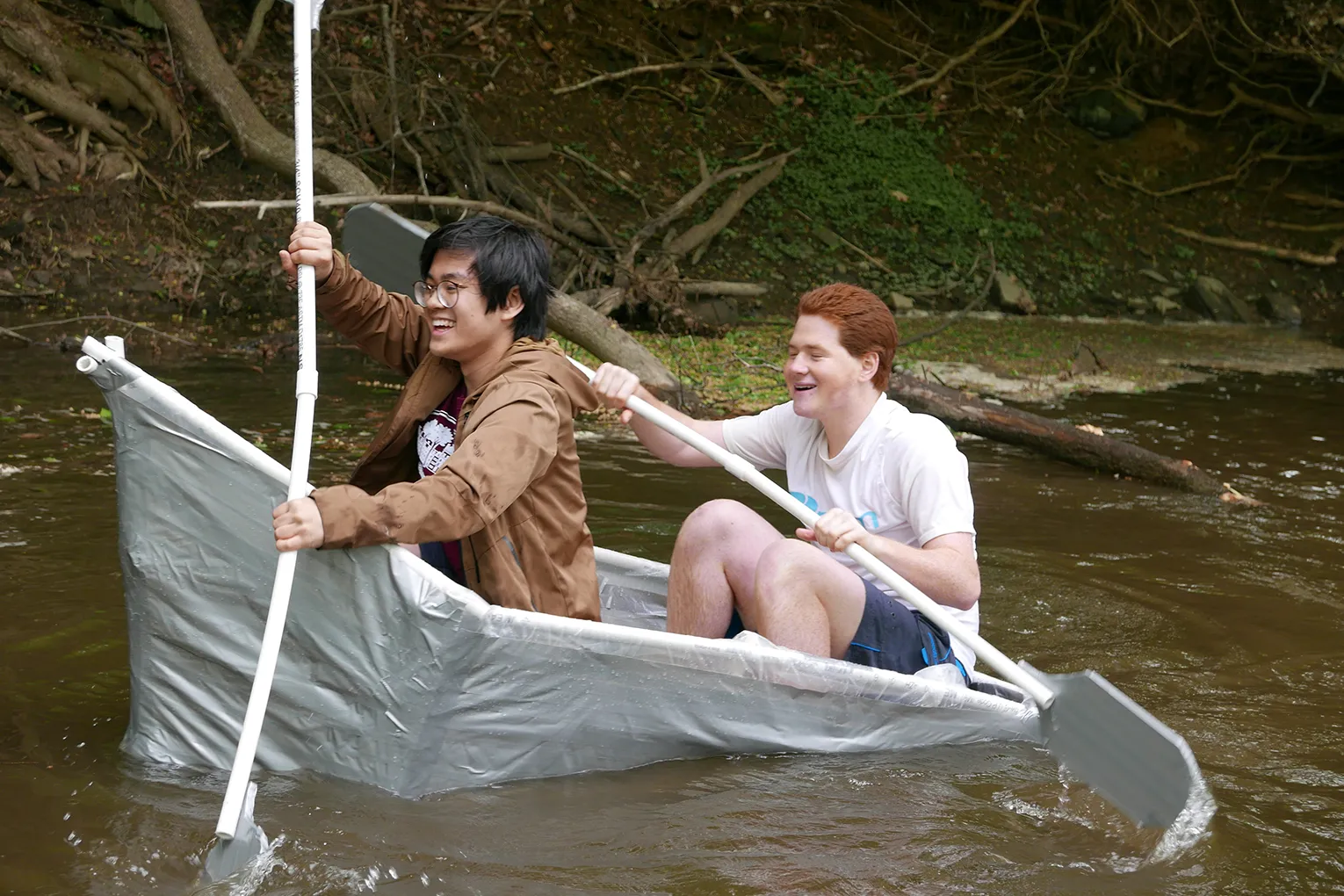There are 7,000 languages in the world, and we're interested in studying all of them. Linguistics is the scientific study of language—we develop techniques to explore patterns that all human languages have in common and investigate the ways in which each is unique. Our explorations yield insights not only about languages, but also about the nature of the human mind.
Linguistics at Swarthmore
Students learn linguistics at Swarthmore through interacting with the information and each other. Coursework and problem sets challenge students to develop their own insights and construct arguments supporting their claims. Professors guide the process, ultimately leading to a fuller understanding of linguistic theory than one could attain by absorbing theories presented in classes and texts.
The community of learning is enhanced and expanded by the Linguistics Department's strong ties to Bryn Mawr and Haverford Colleges. Swarthmore Linguistics professors teach courses on all three campuses (though the vast majority are at Swarthmore), and linguistics courses regularly include students from all three schools.
Why study Linguistics?
The relevance of linguistics to the fields of anthropology, cognitive science, language study, philosophy, psychology, and sociology has been recognized for a long time. Linguistics crosslists courses from ten departments, reflecting the diversity of fields with strong relevance to our field. The interdisciplinary nature of the field, and our program, further encourages students to broaden their horizons and interact with a wide variety of students, scholars, and ideas.
Because the very nature of modern linguistic inquiry is to build arguments for particular analyses, the study of linguistics gives the student finely honed argumentation skills, which stand in good stead in careers in law, business, and any other profession where such skills are crucial.
